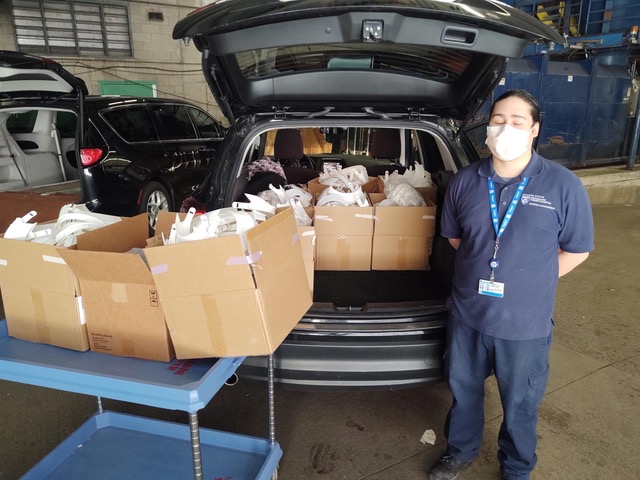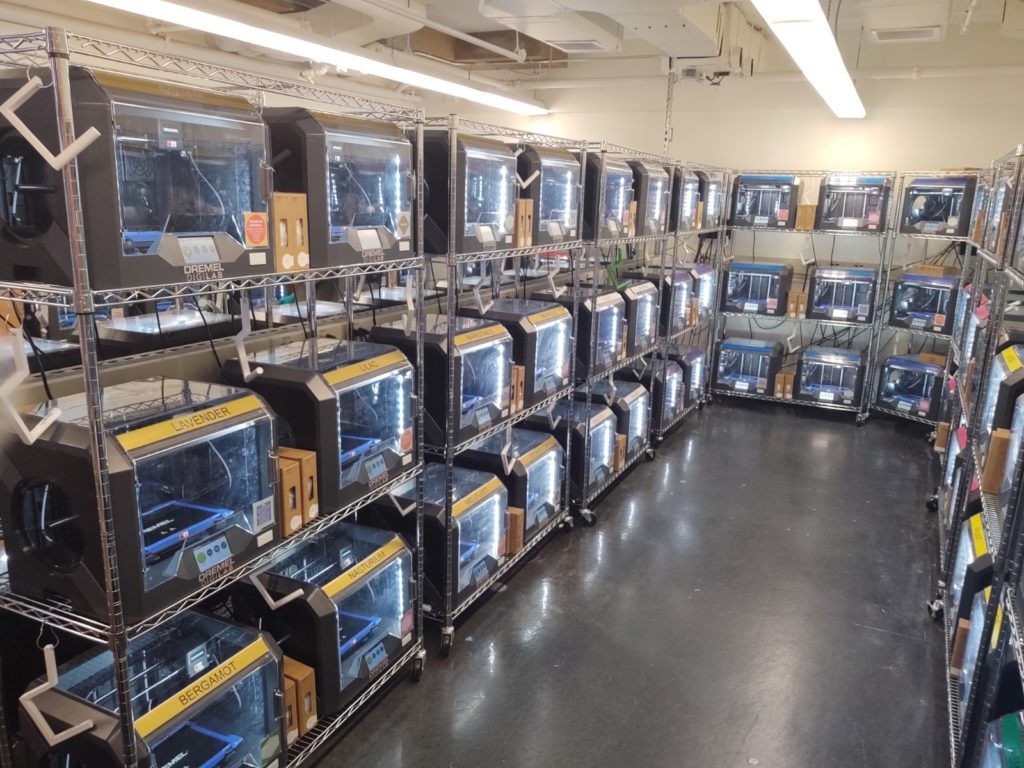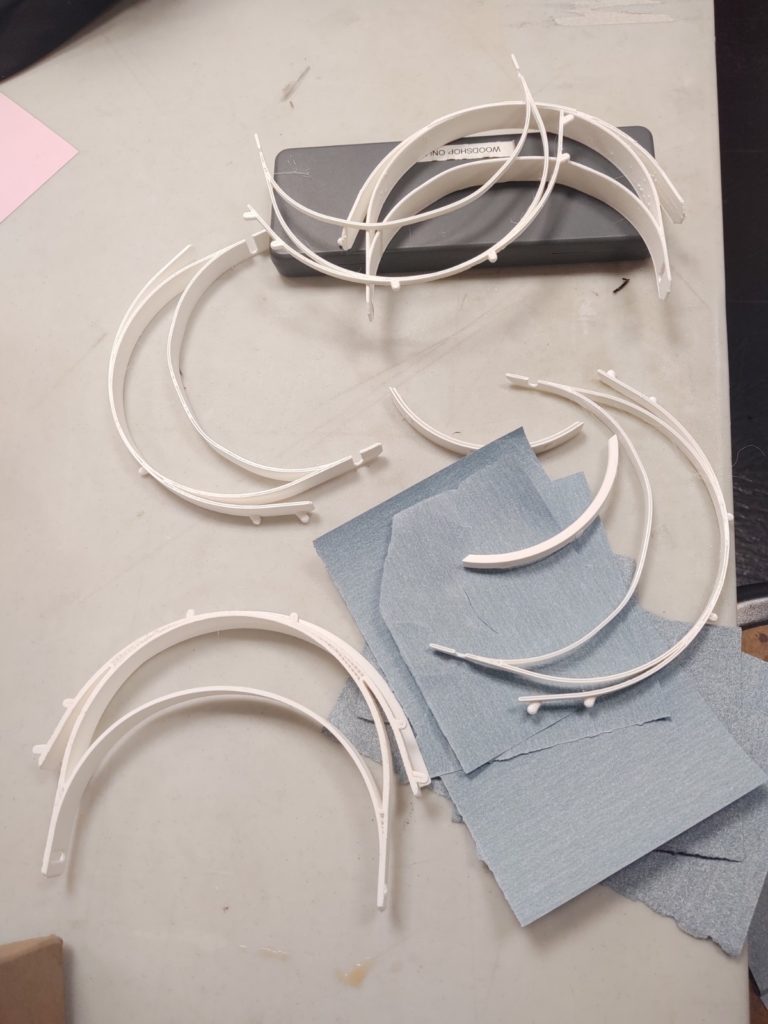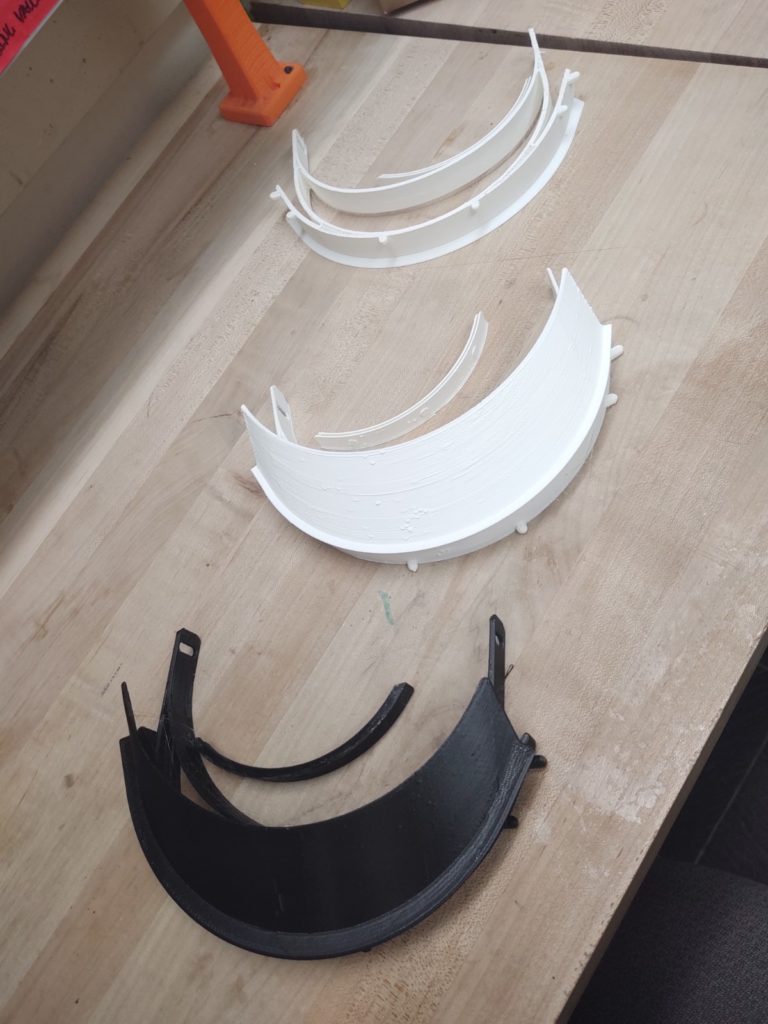
With a stable of 3-D printers, other state-of-the-art fabrication technologies, and expert guidance from across Harvard University, the Harvard Graduate School of Design has begun production of personal protective equipment, or PPE, for front-line medical personnel at area hospitals. GSD fabrication began on April 5, and on April 6, the school delivered a first run of 90 face shields to Brigham and Women’s Hospital (BWH) and set up over one hundred 3-D printers in the school’s Gund Hall for continued production.
The GSD’s production efforts follow several weeks’ worth of conversations, design research, and other preparations with a variety of stakeholders, principally Mass General Brigham’s Center for COVID Innovation (MGBCCI) and BWH. The GSD estimates that it can produce about 3,500 3-D-printed, polylactic acid (PLA) visors, and about 800 laser-cut polyethylene terephthalate glycol (PETG) face shields, with the materials currently available at the school; the school expects to have produced components for about 1,000 face shields by the end of this week.

GSD efforts have been orchestrated by the GSD’s Stephen Ervin, Assistant Dean for Information Technology, and Chris Hansen, 3-D and Digital Fabrication Technical Specialist, with input and guidance from GSD faculty and Harvard partners that include the John A. Paulson School of Engineering and Applied Sciences (SEAS), the Wyss Institute for Biologically Inspired Engineering, Harvard Medical School, and the Harvard T.H. Chan School of Public Health.
Ervin and Hansen have been in dialogue with MGBCCI throughout the month of March; more recently, they were also approached by Dr. Sherry Yu, coordinator of PPE Innovation and Conservation Workgroup in Logistics in Incident Command at BWH, regarding design of a transparent face shield for medical teams.
With design guidance from Eric Höweler, Associate Professor in Architecture, and Martin Bechthold, Kumagai Professor of Architectural Technology and Director of Harvard’s Master in Design Engineering program, Hansen produced a face-shield prototype and determined the design could be effectively fabricated with the GSD’s 3-D printers and laser-cutting equipment. Dr. Yu then confirmed the face-shield design had been tested in a clinical trial at BWH, and confirmed a commitment from BWH Incident Command to move forward with the design.

“Few would have though that one day we would leverage these resources to assist in fighting a pandemic, and yet that is exactly what the GSD’s Fabrication Lab is engaging in, along with many similar facilities across the country,” Bechthold says. “Schools, institutions, private companies and individuals have come together in an often improvised, ad-hoc manner, driven by the conviction that this challenge can be overcome if we leverage the human imagination, think outside the box, and reach out beyond our comfort zone.”
Hansen and GSD Fabrication Lab colleagues are now seeking additional sources of supply. The GSD plans to produce the visors and face-shields as separate components, and to deliver them to Dr. Yu at BWH for assembly and distribution.
“Fortunately, the maker movement has created a decentralized, rapid-prototyping network for small quantity production of components,” Höweler says. “Social networks were able to rally resources, and volunteers stepped up. It has been remarkable to see a flood of people wanting to help.”
Alongside the ongoing MGBCCI and BHW conversations, Hansen and colleagues have fielded inquiries and considerations from the City of Boston, MIT, and other Harvard schools regarding production and prototyping of materials and equipment.

“In terms of production, we are well positioned to contribute in a meaningful way,” Hansen says. “There’s a lot happening in tandem, with ever-changing needs and priorities from healthcare providers. We are working to be as nimble as possible within the larger Harvard community to ensure that whatever effort and resources we do contribute are meaningful and impactful.”
While campus buildings remain generally closed, the GSD has worked to ensure safety standards and industrial-hygiene protocols for staff who have been permitted to enter the GSD’s Gund Hall-based Fabrication Lab.
Alongside their work on PPE face protection, Hansen and GSD Research Associate Saurabh Mhatre have also been advising a working group focused on creating prototypes of innovative PPE for full-body protection.
“This is the first pandemic of the ‘jet age,’” Höweler observes, “but it’s also the first pandemic of the ‘digital fabrication age,’ where expertise and open-source content moves freely, and individuals are networked for a common cause. It may turn out to be the thing that brings us together in different ways.”